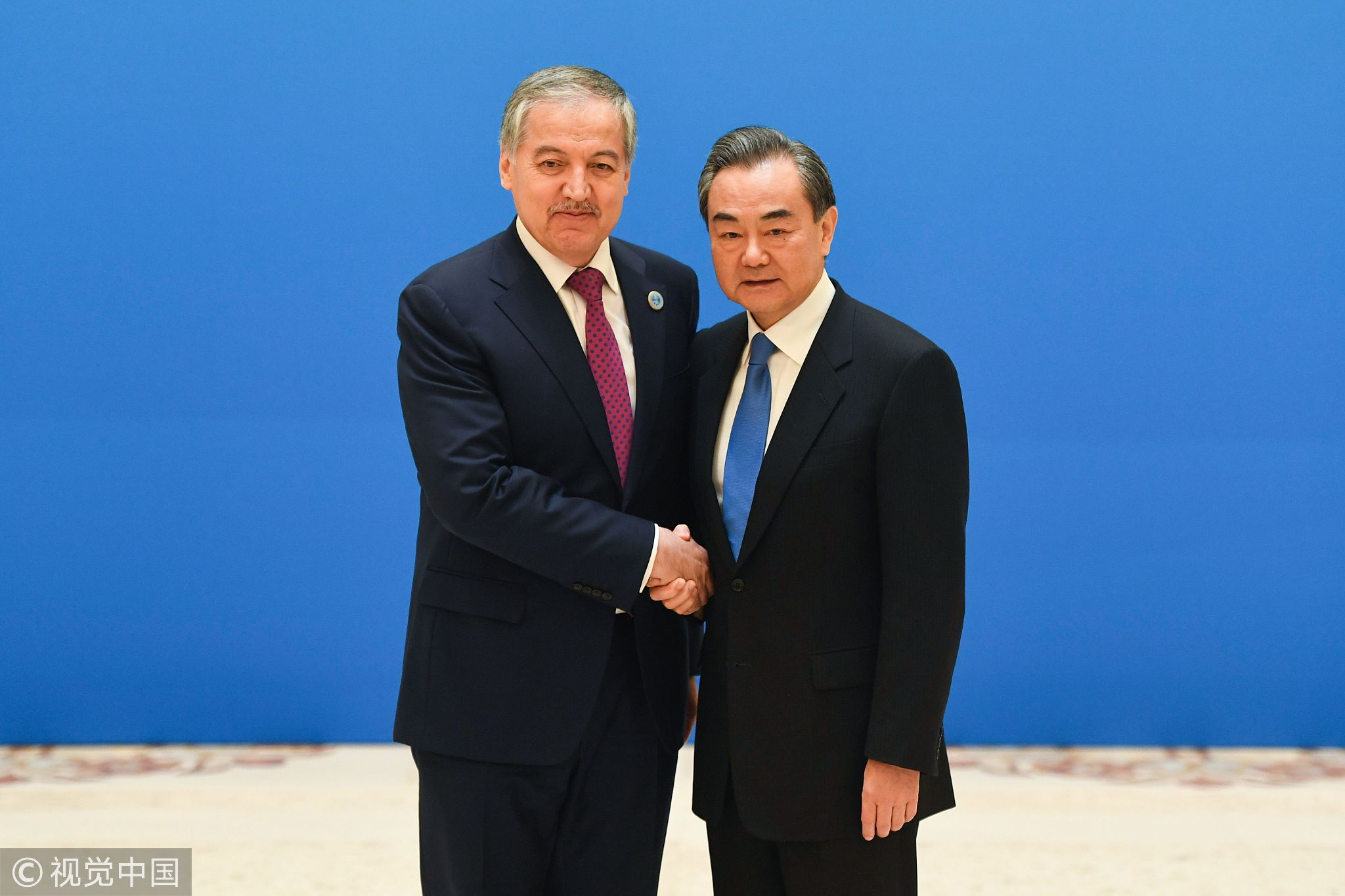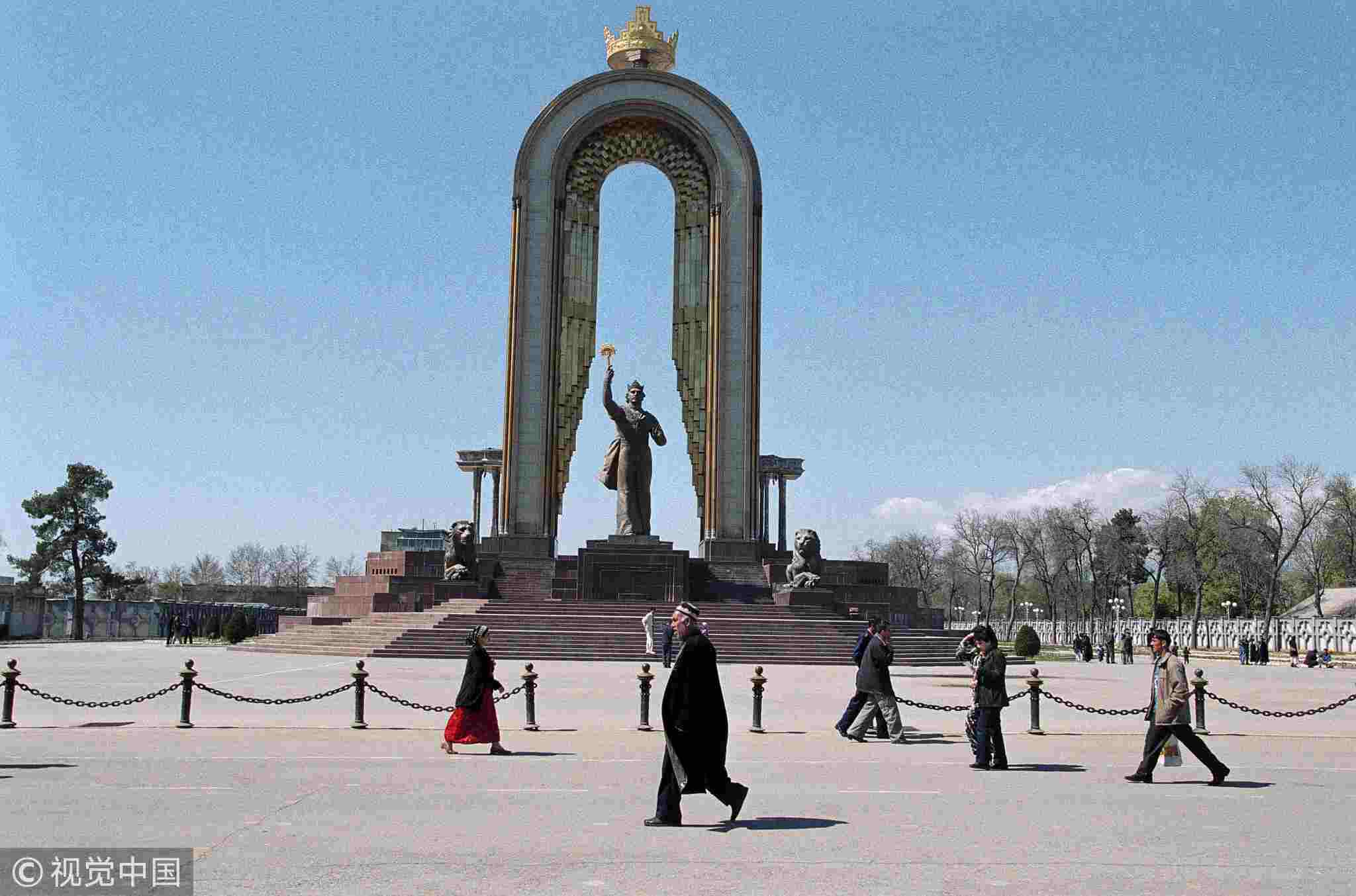
Opinions
11:57, 11-Oct-2018
Opinion: China-Tajikistan brotherhood warms Dushanbe's winters
Updated
11:25, 14-Oct-2018
Shen Shiwei

Editor's note: Shen Shiwei is a research fellow at the Charhar Institute and former government relations and business consultant for Chinese enterprises' overseas investment. The article reflects the author's opinions, and not necessarily the views of CGTN.
Dushanbe, capital city of Tajikistan, is in the spotlight ahead of Chinese Premier Li Keqiang's official visit and attendance of the 17th Meeting of the Council of Heads of Government of the Member States of the Shanghai Cooperation Organization. So what can be expected?
Heat and electricity generate a golden future
Winters in the city of 700,000 are no longer cold.
Previously, approximately 70 percent of the population suffered from extensive power shortages during the winter, according to a 2012 report by the World Bank on the Europe and Central Asia Region. Power shortages are a major constraint on economic and social development.
In Tajikistan, energy is a matter of life and death. But everything has changed since a group of Chinese companies and engineers came to the country.
The 400 megawatt (MW) Dushanbe No. 2 Thermal Power Station designed and constructed by China's TBEA Co., Ltd. has greatly relieved Tajikistan's power and heat shortages during the winter. In December 2016, Phase II was completed and put into operation. The whole project could account for 60 percent of Dushanbe's local power and heating services. Moreover, the 500 kilovolt (kV) and 200 kV high-voltage national power transmission projects constructed by TBEA have integrated Tajikistan's long-separated south and north grid.

Chinese Foreign Minister Wang Yi shakes hands with Tajikistan's Foreign Minister Sirojidin Aslov (L) before a meeting of foreign ministers and officials of the Shanghai Cooperation Organization (SCO) at the Diaoyutai State Guest House in Beijing on April 24, 2018. /VCG Photo
Chinese Foreign Minister Wang Yi shakes hands with Tajikistan's Foreign Minister Sirojidin Aslov (L) before a meeting of foreign ministers and officials of the Shanghai Cooperation Organization (SCO) at the Diaoyutai State Guest House in Beijing on April 24, 2018. /VCG Photo
Gold mine cooperation enters golden era
“China has always been a trusted ally, dear friend and good neighbor for Tajikistan. JV Zeravshan is the result of good cooperation between China and Tajikistan,” said Tajikistan President Emomali Rahmon at the ribbon cutting ceremony for ZGC Company's ore-processing plant in 2015.
After China's Zijin Mining Group acquired CBML in 2007, Zijin invested more than 400 million US dollars in the reconstruction and technological improvement of its mines, reversing ZGC's losses and making ZGC the largest gold producer in Tajikistan. As of September 2015, ZGC has produced 12.7 tons of gold, reported 520 million US dollars in revenue and paid 157 million US dollars in taxes, according to Zijin's homepage.
Tajikistan's leap from landlocked to interlinked
If you want to get rich, build the road first. But it's not an easy job to build roads in a country covered by the Pamir Mountains, where more than 50 percent of the land sits 3,000 meters above sea level.
Since Tajikistan's independence in 1991, there has been no direct link between its three separate and landlocked railway sections. In short, there was no integrated national railway system. For quite a long time, cargo and passengers being shuttled by train between the central and southern regions needed to travel via a circuitous 432 km route through neighboring Uzbekistan. The cost of road logistics is pretty high. Low efficiency, unsecured connectivity and high logistics costs have been a bottleneck for Tajikistan's economic development.
With Chinese concessional loans and construction technology from the China Railway Group, the Vahdat-Yovon railway was inaugurated in 2016 has integrated Tajikistan's central region with the southern Khatlon provinces for the first time in history. The railway completes a 119 km link between the capital Dushanbe and southern industrial city Qurghonteppa.
Moreover, the upgraded roads centered around the capital Dushanbe have not only integrated the country closely, but also strengthened Tajikistan's link with neighboring countries including China. Beyond that, Tajikistan is willing to align the country's development strategy for the period up to 2030 with the Belt and Road Initiative. In 2014, Tajikistan signed a memorandum with China about their cooperation on the Belt and Road Initiative.
Multilateral cooperation flourishes in the region
Tajikistan borders China's northwestern Xinjiang Uygur Autonomous Region to the south, one of the core regions on the Silk Road Economic Belt. For China-Tajikistan and China-Central Asian cooperation at large, they have common development tasks, face similar regional threats and share fruitful cooperation under effective multilateral mechanisms, namely the Shanghai Cooperation Organization (SCO).
At this year's SCO Qingdao Summit, the landmark Qingdao Declaration and a five-year action plan for implementing the Treaty on Long-Term Good-Neighborliness, Friendship, and Cooperation of the SCO Member States, laid out a roadmap for future SCO cooperation and development.

Somoni Square in Dushanbe./VCG Photo
Somoni Square in Dushanbe./VCG Photo
The SCO first began as the "Shanghai Five" in 1996 when China, Kazakhstan, Kyrgyzstan, Russia and Tajikistan signed an agreement to resolve border issues and increase military cooperation on security. With a sound cross-border mechanism, China-Tajikistan trade, investment, security and military cooperation has skyrocketed in recent years.
To eliminate a similar regional threat and promote regional security, China, Tajikistan and other Central Asian countries have worked closely and continuously to fight against the "three evil forces" of terrorism, extremism and separatism, in addition to organized cross-border crime.
Central Asia is landlocked, but it serves as the bridge for the Eurasia continent. After years of development, the SCO has now become one of the largest regional organizations in terms of geographical coverage, population and influence. Given the rising populism, anti-globalization and isolationism trend, firmer SCO unity will play a very special global importance.
(If you want to contribute and have specific expertise, please contact us at opinions@cgtn.com.)

SITEMAP
Copyright © 2018 CGTN. Beijing ICP prepared NO.16065310-3
Copyright © 2018 CGTN. Beijing ICP prepared NO.16065310-3